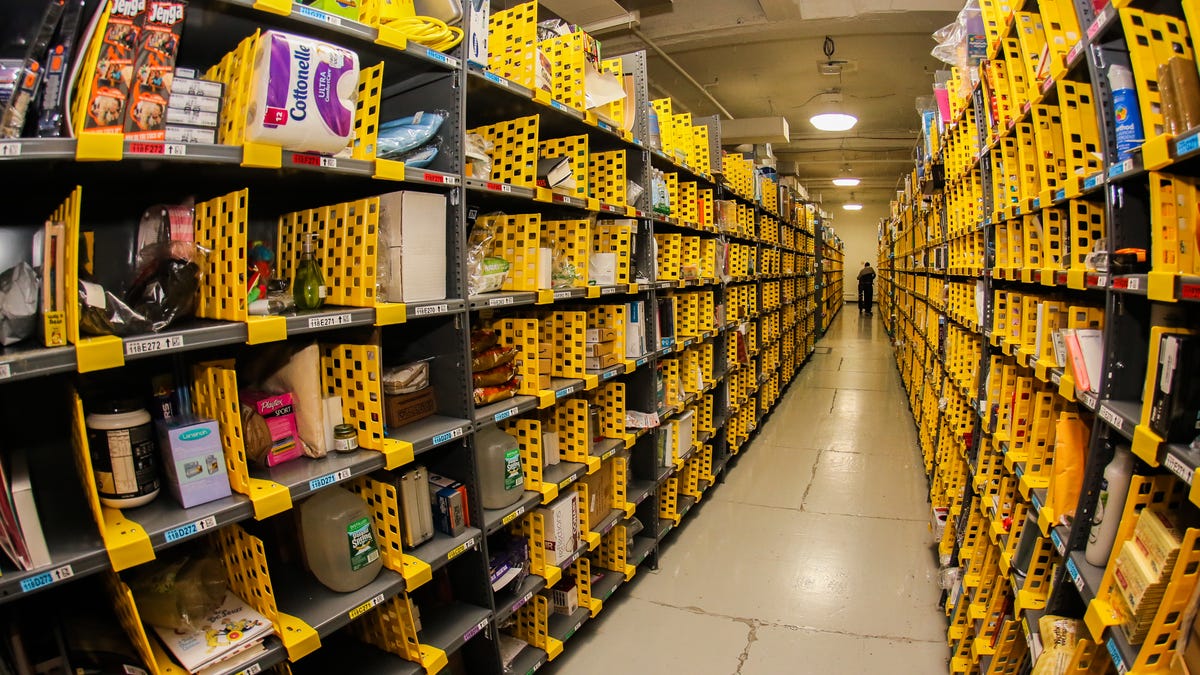5 things you didn't know about Amazon
Think you know everything there is to know about the online superstore? Think again.

Are you an Amazon expert? Do you use tools like Honey to track price-drops and find lower prices from other sellers? Do you use Amazon Smile to automatically give to charity without even trying?
That's all good stuff, but there's more to the online behemoth than you might think. Here are four things about Amazon you probably didn't know...
You can still get after-purchase price adjustments (maybe)
Amazon doesn't offer price-protection, but your credit card might -- and Sift will let you know if there's a refund you can claim.
Once upon a time, Amazon offered price protection: If a product's price dropped after you purchased it, you could get a refund for the difference. Alas, that policy has been terminated.
That doesn't mean you can't still get price protection. It's entirely possible -- likely, even -- that your credit card offers its own such perk. How can you find out? I'm a newfound fan of Sift, a free app that catalogs all the hidden benefits of your credit card.
All you do is link the card you use for Amazon purchases. From there, Sift will track your purchases and notify you of any price drops. (For retailers other than Amazon, the service will actually file a price-drop claim on your behalf.) If it finds one, just call up your credit card provider and file a price-protection claim.
Amazon doesn't always have the lowest prices
It's true: Amazon might be your go-to source for, well, everything, but that doesn't guarantee it has the lowest prices.
What's more, it doesn't offer price-matching, so if you do find a better deal elsewhere... take it!
For example, suppose you're shopping for an iPad. At the time of this writing, Best Buy has the current-gen 9.7-inch model (32GB) for $250. Hit up Amazon.com and you'll see a price of $280. That's from a third-party seller (aka "Amazon Marketplace"), because Amazon is not an authorized Apple reseller (Best Buy is, for example). So, you might find that Marketplace items aren't always the cheapest.
Similarly, Best Buy has an HP 25es monitor for $140 to Amazon's $197 (again, the latter is from Marketplace). And even Amazon-owned Woot is offering a Force1 Space Blaster 4-player laser-tag game for $70. Price at Amazon proper: $150.
Bottom line: Don't just assume Amazon has the lowest price. It may have it some of the time, or even much of the time, but it's always smart to shop around.
Fake reviews still exist
Don't believe everything you read. Although the service has cracked down on incentivized reviews, the reality is that fakes are still rampant on the site, and can seriously misinform your purchases.
Suppose you're in the market for an action camera. A GoPro will run you $200-$400 in the US, but there are countless knock-offs priced under $100 -- in some cases well under. They look like GoPros. They come with many of the same accessories. And look at that 4.8-star review average!
So what's the story here? Are those reviews legit and well-earned? Or were some -- even many -- planted there by a seller hoping to move more product?
For answers, look to Amazon review-vetting sites Fakespot and ReviewMeta. They analyze the reviews and look for suspicious markers: overly enthusiastic wording, customers that have only one review, a product with lots of deleted reviews and so on.
The presence of "questionable" reviews doesn't necessarily mean a product isn't good, it simply means the average star rating might not be as high as you think. Find out more in my story on how to spot fake Amazon reviews.
2-day shipping doesn't always mean 2-day delivery
One of the all-time great Amazon Prime perks is free two-day shipping, right? Right -- so why do items sometimes take three, four or more days to arrive?
There's some little-known fine print that explains this: Amazon doesn't guarantee your order will arrive two days after you place it; it guarantees that it will arrive two days after it ships. If there's limited inventory or some other issue, it might take a day or two before an item leaves the warehouse.
And don't forget garden-variety shipping delays: Inclement weather can slow down all those delivery trucks and airplanes.
Amazon's Choice is still kind of a mystery
You've probably seen those little black "Amazon's Choice" badges on various product pages. For a long while, their meaning was nebulous; did that label mean the product was an especially good deal? A preferred pick of an Amazon reviewer? Something else entirely?
If you moused over the badge, you'd see this description: "Amazon's Choice recommends highly rated, well-priced products available to ship immediately."
Unsatisfied with that explanation, CNET's David Carnoy went looking for answers -- and didn't really find any. But it's a fascinating deep-dive into this head-scratching component of the country's largest online store.
And there's an interesting coda: About six weeks after Carnoy's report appeared, Amazon started adding bullet points below each Amazon's Choice badge: "Highly rated," "Low Return Rate" and so on. In other words, the company now provides at least some explanation as to how that label is earned.
First published on March 6.
Update, March 8: Added more pricing information.
Update, May 2: Added Amazon's Choice information.
Amazon Prime: 22 benefits every member gets.

